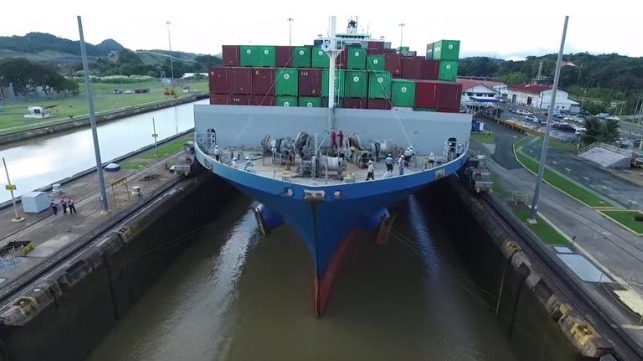The Panama Canal expansion, which began commercial operation in 2016, has added a wider traffic lane and doubled its capacity to accommodate large container ships. These ships carry over 13,000 TEUs and some exceed 22,000 TEUs. Because of the influx in large ships, seaports across the globe are experiencing bottlenecks, customs delays and the need for bigger cranes. Many ports, including PortMiami, have undergone improvement projects to better accommodate the ships.
Recent infrastructure improvements totaling over $1.0 billion at PortMiami offer shippers a strategic location equipped to handle vessels requiring deeper channels up to a 52-foot depth. The Port has hosted more than 250 Post-Panamax vessels that could not have called without the deep dredge project or without the acquisition of new Super Post-Panamax cranes. PortMiami, in collaboration with its cruise and cargo partners, posted a record year in 2018.
With its enhanced capacity for larger ships, South Florida has emerged as a leader in the new global era and the region’s ports have had a positive impact on the booming industrial market, which is poised to continue for at least the next few years.
Effects on South Florida’s industrial market
Since the recovery from the Great Recession, the completion of the Panama Canal expansion and recent capital improvements, PortMiami has experienced a 14.4 percent increase in container volume while Port Everglades saw a similar rise of 14 percent in 2017. South Florida’s strong ties to Latin America and the Caribbean, coupled with having the closest East Coast ports to the Panama Canal, has been a huge boon for the region’s industrial market.
Miami’s vacancy rate of 4 percent at the close of Q4 2018 is tied with Broward County for the lowest in Florida despite the addition of more than 13.3 million square feet of new inventory since 2011. More than 2.8 million square feet remains under construction with 94 percent available to lease.
During the most recent economic boom, leasing activity has been led by logistics and distribution companies making up nearly 11 million square feet of large deals. The retail/wholesale segment followed with 6.5 million square feet and can be attributed to the growth of e-commerce and distribution to Latin America and the Caribbean. Home and buildings supplies, along with food and beverage distribution, accounted for 3.3 million square feet and 2.7 million square feet respectively.
NKF Executive Managing Director Steve J. Medwin, SIOR, CCIM, said, “Since the financial crisis, we have seen a steady influx of new-to-market tenants, such as Amazon and Ice River Springs, relocate to South Florida and absorb significant amounts of new warehouse space.”
The new age of improved fulfillment centers
Retailers, supply chain management and third-party logistics companies continue to be in need of improved distribution facilities in close proximity to urban areas that support rapid product delivery. In response to changing needs, Industrial developers are increasing storage capabilities while adjusting designs to improve operations.
According to Supply Chain Dive, the average warehouse size increased 143 percent since 2007. Additionally, high-tech conveyer methods and advanced automated storage and retrieval systems are adding to build-out costs. Warehouse construction spending increased by 29 percent annually over the last five years.
Developers who had foresight about the changing tide have experienced large rewards as recent sales prices of these new facilities have, in some cases, more than doubled in price per square foot compared to warehouse sales that took place in the previous economic boom.
NKF Executive Managing Director Nick Wigoda, SIOR, said, “Since South Florida is landlocked by the Atlantic Ocean and the Everglades, the availability of industrial land is shrinking, which continues to drive up pricing for nearly all industrial properties.”
Because e-commerce is projected to grow by 60 percent over the next five years and is a driving factor in the industrial market, it is likely this trend will continue. Large fulfillment centers are breaking ground almost daily and investors continue to acquire and invest in industrial properties, especially in gateway cities like Miami, Los Angeles, New York City and Seattle.
Read Newmark Knight Frank’s national study on port activity from its December 2018 issue of Real Insight here.
Eric Messer is the research services manager for the state of Florida at Newmark Knight Frank’s (NKF).
